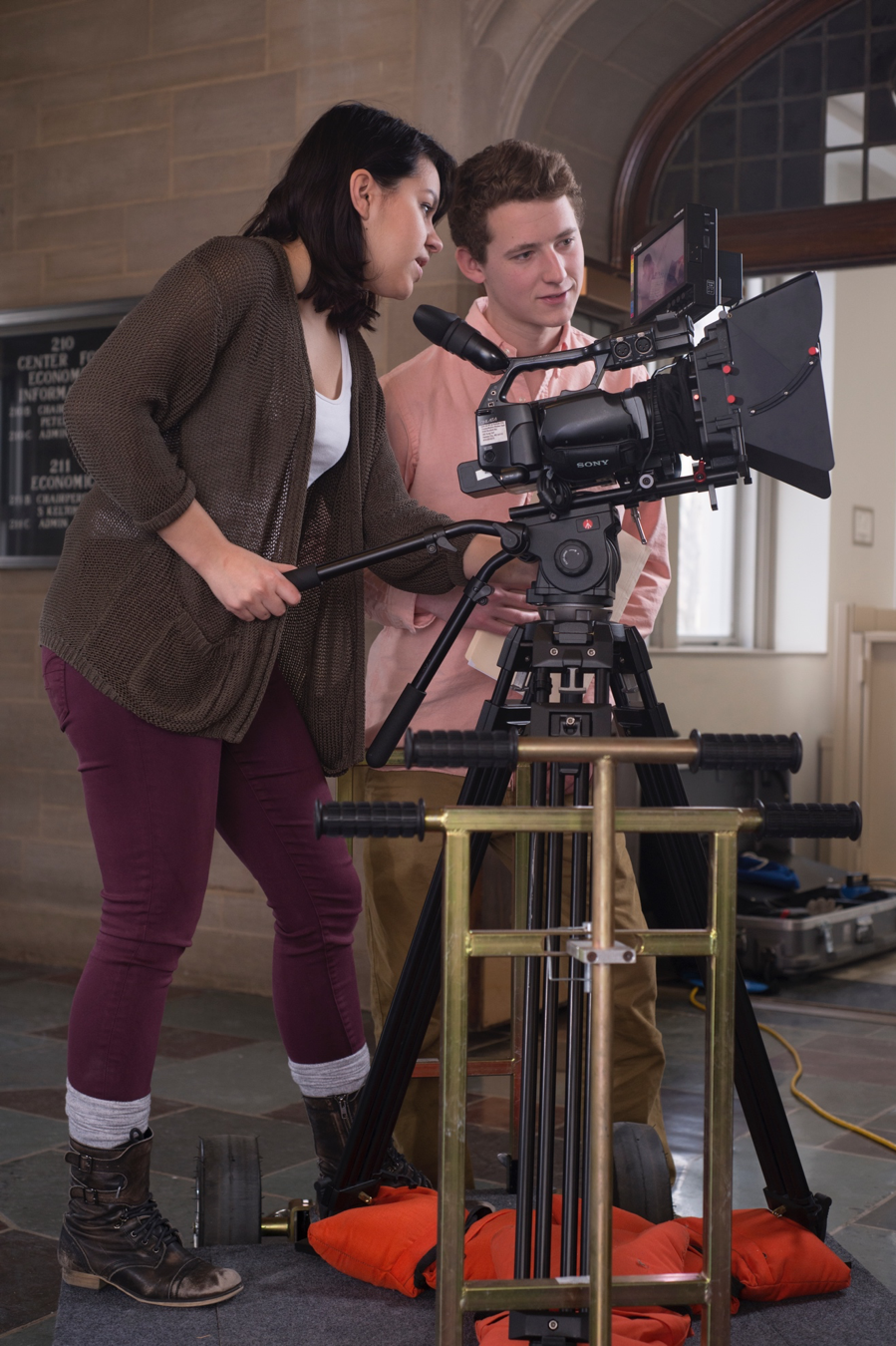by Caitlin Horsmon
In the EDIT 10: Best Practices, cultivating crew by “encouraging collaboration and cooperation over auteurism and competition” is the second tenet of inclusive teaching. Every artist knows that collaboration is an essential skill, but working in a group is often not an innate skill for students and can create roadblocks to inclusion and equity in student experiences.
 Teachers of media production have likely had the experience of watching students self-select roles in groups where ideas about age, race, or gender influence how they identify their own skills and talents. I’ve found that classroom discussion about the nature of good collaboration and modeling can set students up for more success in group work, and can start a conversation about how cultural narratives shape ideas about who is good at what.
Teachers of media production have likely had the experience of watching students self-select roles in groups where ideas about age, race, or gender influence how they identify their own skills and talents. I’ve found that classroom discussion about the nature of good collaboration and modeling can set students up for more success in group work, and can start a conversation about how cultural narratives shape ideas about who is good at what.
I’ve started to incorporate collaboration into each assignment with both peer and instructor feedback as a part of each grade using this Group Project Rubric (PDF). Here’s another great resource for assignment design for group projects.A conversation about the ongoing status of women, people of color and LGBTQIA folks in media production is also instructive to applying those concepts to more generalized group behavior. The status of these groups is easily illustrated by asking the class to name ten directors, cinematographers, or editors who aren’t straight white men – or doing a quick image identification test showing diverse images of directors or other technical staff.
Having some time to practice and articulate the elements of collaboration has helped my students to better evaluate their own skills and those of their peers, and has opened up a discussion around race, class, gender, and age assumptions in production roles.
 Group work is a necessity of film production, but as is reflected in our commercial film structure, production contexts often reproduce stereotypes about who has ‘tech’ skills, who can and should be creative leaders, and who might be better at working behind the scenes. As a part of teaching, collaboration can be used to challenge these outdated ideas and to create a classroom environment where existing power-structures aren’t unconsciously repeated. Julia Voss draws upon Elizabeth Wardle to argue that “using pedagogy to challenge such doxa represents one of the most powerful impacts instruction can have on students’ intellectual, personal, civic, and professional lives… This call to critical socio-technical consciousness can help students be more aware of how cultural capital structures collaborative digital work, shifting how students think of their existing skills and experiences and how they select project responsibilities.” (Voss)
Group work is a necessity of film production, but as is reflected in our commercial film structure, production contexts often reproduce stereotypes about who has ‘tech’ skills, who can and should be creative leaders, and who might be better at working behind the scenes. As a part of teaching, collaboration can be used to challenge these outdated ideas and to create a classroom environment where existing power-structures aren’t unconsciously repeated. Julia Voss draws upon Elizabeth Wardle to argue that “using pedagogy to challenge such doxa represents one of the most powerful impacts instruction can have on students’ intellectual, personal, civic, and professional lives… This call to critical socio-technical consciousness can help students be more aware of how cultural capital structures collaborative digital work, shifting how students think of their existing skills and experiences and how they select project responsibilities.” (Voss)
We start the semester out by discussing the learning outcomes for the class and the elements of collaboration – listening, critical thinking, negotiation and leadership. Students are asked to identify the skills they feel most comfortable with and those that they need more practice with, and to prioritize developing new skills in their group projects. We also spend a good amount of time discussing collaboration – identifying individual strengths and weaknesses and using previous collaborative experiences as test cases to establish best practices. 
As a group, we rehearse listening, paraphrasing, asking good questions, identifying points of consensus, and dividing a production task into work duties foregrounding that collaboration is at its heart experimentation, assessment and learning from inevitable mistakes.
This exercise allows the class to create a shared language, evaluate strengths and challenges and to include an analysis of social inequality as a part of a collaborative framework. It sets expectations for good behavior and acknowledges and rewards collaborative skill and self-awareness.
References:
Center for the Study of Women in Television & Film, San Diego State University
Hollywood Diversity Report, UCLA College of Social Sciences
Rogers, M. (2017). Conceptualizing and implementing critical filmmaking pedagogies: Reflections for educations. In J. Communigs and M. Blatherwick (eds.), Creative dimensions of teaching and learning in the 21st Century (pp. 229-228). Rotterdam, NL: Sense Publishers.
Julia Voss, Who Learns from Collaborative Digital Projects? Cultivating Critical Consciousness and Metacognition to Democratize Digital Literacy Learning, Composition Studies, Vol. 46 No. 1, 2018.
Caitlin Horsmon is artist, teacher and curator. She is Associate Professor of Film & Media Arts at the University of Missouri-Kansas City and a member of the Women’s and Gender Studies Faculty.


